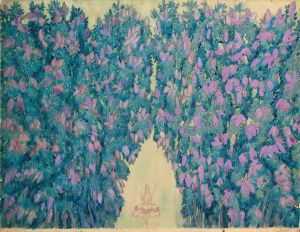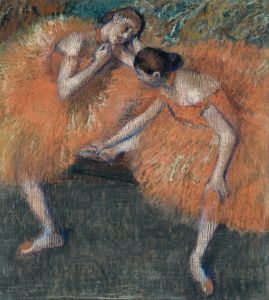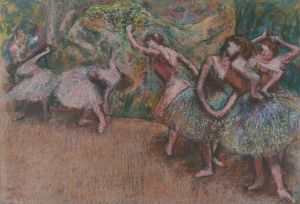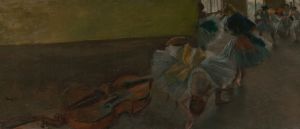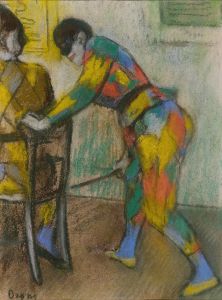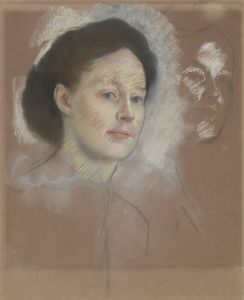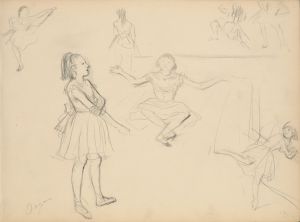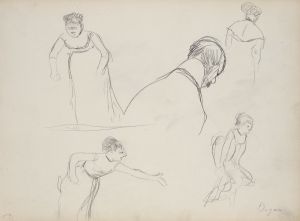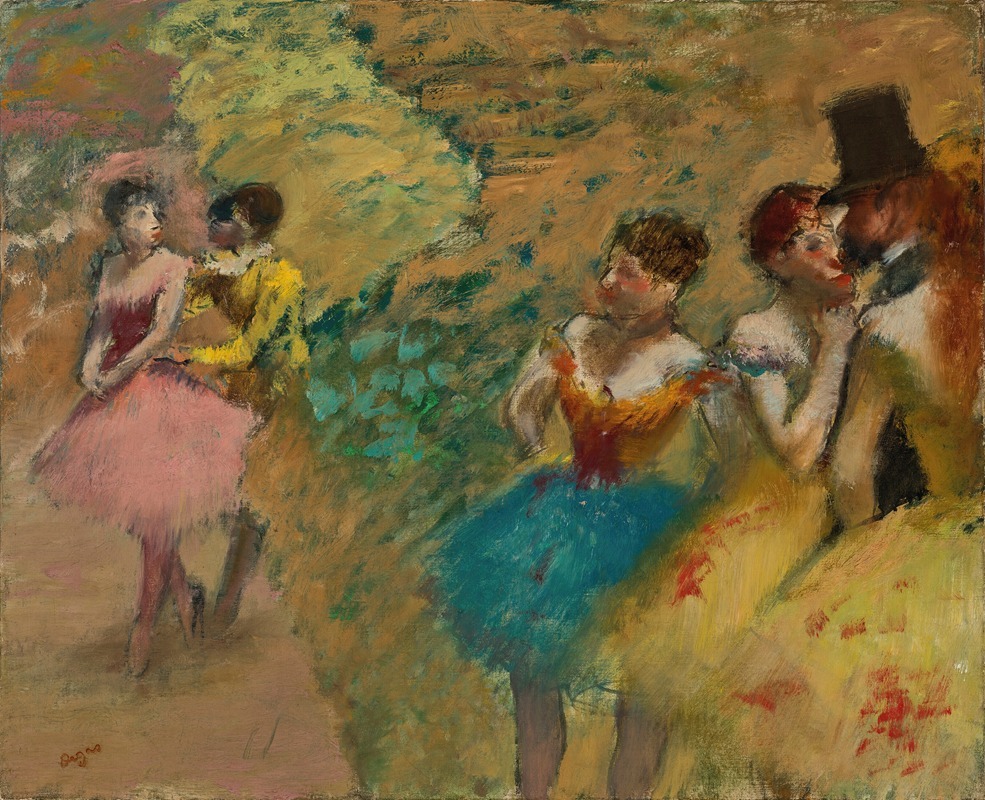
Danseuses
A hand-painted replica of Edgar Degas’s masterpiece Danseuses, meticulously crafted by professional artists to capture the true essence of the original. Each piece is created with museum-quality canvas and rare mineral pigments, carefully painted by experienced artists with delicate brushstrokes and rich, layered colors to perfectly recreate the texture of the original artwork. Unlike machine-printed reproductions, this hand-painted version brings the painting to life, infused with the artist’s emotions and skill in every stroke. Whether for personal collection or home decoration, it instantly elevates the artistic atmosphere of any space.
"Danseuses" (English: "Dancers") is a recurring subject in the works of French artist Edgar Degas (1834–1917), who is renowned for his depictions of ballet dancers. While Degas created numerous paintings, pastels, drawings, and sculptures featuring dancers, the specific work titled "Danseuses" refers to one of his many representations of this theme. Degas's fascination with ballet and the world of dancers became a defining aspect of his artistic career, and his works often capture the grace, movement, and behind-the-scenes moments of the ballet world.
Degas's "Danseuses" pieces typically depict dancers in rehearsal, on stage, or in moments of rest, offering a glimpse into the physical demands and discipline of their craft. His approach often combined realism with an impressionistic sensitivity to light, color, and movement. Degas was particularly interested in exploring the human form in motion, and his works frequently highlight the tension and effort behind the seemingly effortless performances of ballet dancers.
The artist employed a variety of media to depict dancers, including oil paints, pastels, charcoal, and sculpture. His use of pastels, in particular, allowed him to achieve vibrant colors and dynamic textures, which became a hallmark of his later works. Degas's compositions often feature asymmetrical framing and unconventional perspectives, influenced by his interest in photography and Japanese prints. These techniques give his works a sense of immediacy and intimacy, drawing the viewer into the private world of the dancers.
Degas's focus on dancers was not merely aesthetic; it also reflected his interest in modern life and the changing social dynamics of 19th-century Paris. Ballet was a popular form of entertainment during this period, and the Paris Opéra Ballet served as a central institution in the city's cultural life. Through his art, Degas documented the lives of dancers, from their rigorous training to their moments of rest and camaraderie.
While specific details about the creation date or current location of a particular "Danseuses" work may vary, many of Degas's dancer-themed pieces are housed in major museums around the world, including the Musée d'Orsay in Paris, the Metropolitan Museum of Art in New York, and the National Gallery of Art in Washington, D.C.
Degas's works featuring dancers remain some of his most celebrated and iconic contributions to the art world, offering a timeless exploration of movement, discipline, and the beauty of human expression.





